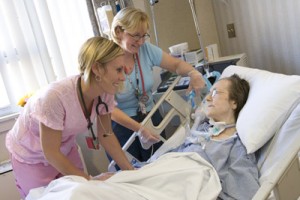Nurses play an important part in any hospital. You can’t imagine a hospital or a hospice care without them. They have so many roles that any hospital would find it hard to deal with their patients without them.
They don’t just roam around a hospital and assist those in need of help. Nurses have specific roles to do for their patients. Their duties may have evolved over time, but nurses are no longer mere assistants to doctors and medical specialists. A hospital care is not complete without a nurse.
Care Provider
First of all, nurses provide care to their patients. And that includes attending to their personal needs at times.
Comforter
Nurses are great comforters, too. Their patients need that more than giving a precise medical diagnosis. When a nurse provides comfort to a patient; that will make his patient feel better.
Communicator
Nurses should be able to communicate to their patients as well. If they can talk to them, establish lines of communication, their patients’ time inside a hospital would be worthwhile.
Coach
They can be a teacher, if need be. This happens when explaining difficult terms used with medicine. If a nurse provides coaching to his patient, things inside the hospital would be a whole lot better.
Client Advocate
Nurses should be able to treat their patients as the most important person in the hospital. It is not the hospital who is paying them but their patients. So, providing care and comfort to them should be their main duty.
This is a short list of the many roles nurses do inside a hospital. They may use a combination of these roles, depending on the need of the patient, but nurses are there to give special medical attention to those who are in need of one.




